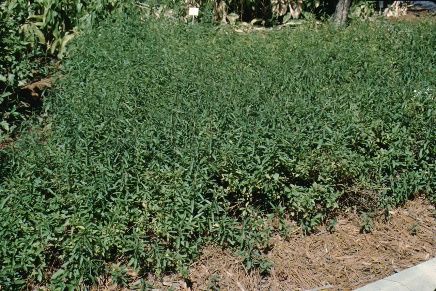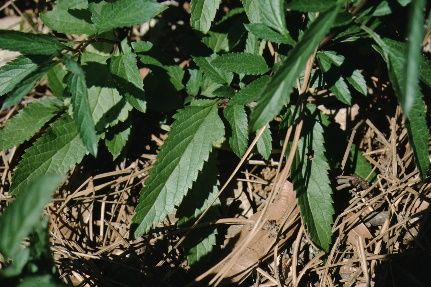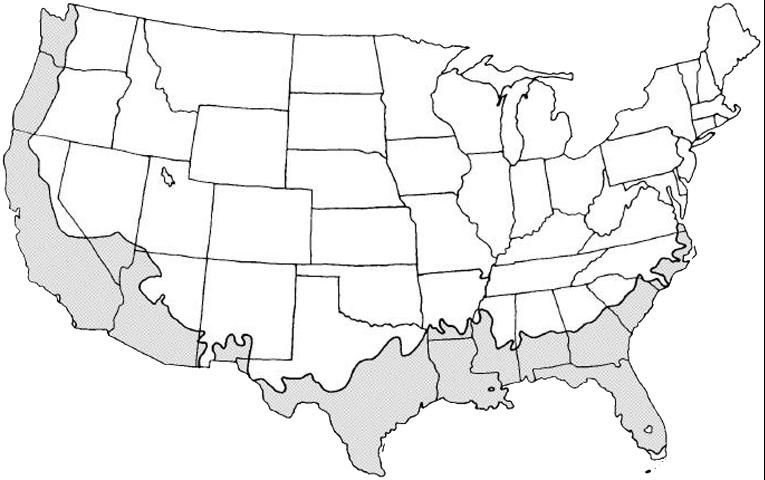Introduction
Bog sage is an upright to spreading perennial that eventually attains a height of 3 to 4 feet. The coarse-textured leaves are light green to dark green in color depending on soil conditions and fertilization practices. Bog sage blooms throughout the spring and summer with electric blue flowers. This herbaceous perennial may be used as a ground cover or background plant. It presents a nice, massed display and is exceptionally beautiful when planted along with ornamental grasses.

Credit: Edward F. Gilman, UF/IFAS

Credit: Edward F. Gilman, UF/IFAS
General Information
Scientific name: Salvia uliginosa
Pronunciation: SAL-vee-uh yoo-lidge-jin-NOE-suh
Common name(s): bog sage, bog salvia
Family: Labiatae
Plant type: herbaceous; ground cover
USDA hardiness zones: 8 through 10A (Figure 3)
Planting month for zone 8: year-round
Planting month for zone 9: year-round
Planting month for zone 10: year-round
Origin: not native to North America
Invasive potential: aggressive, spreading plant
Uses: border; cut flowers; attracts butterflies; attracts hummingbirds; ground cover
Availability: somewhat available, may have to go out of the region to find the plant

Credit:
Description
Height: 2 to 4 feet
Spread: 4 to 8 feet
Plant habit: spreading
Plant density: dense
Growth rate: fast
Texture: fine
Foliage
Leaf arrangement: opposite/subopposite
Leaf type: simple
Leaf margin: dentate
Leaf shape: oblong
Leaf venation: bowed; brachidodrome
Leaf type and persistence: evergreen
Leaf blade length: 2 to 4 inches
Leaf color: green
Fall color: no fall color change
Fall characteristic: not showy
Flower
Flower color: blue
Flower characteristic: spring flowering; summer flowering
Fruit
Fruit shape: no fruit
Fruit length: no fruit
Fruit cover: no fruit
Fruit color: not applicable
Fruit characteristic: inconspicuous and not showy
Trunk and Branches
Trunk/bark/branches: not applicable
Current year stem/twig color: brown
Current year stem/twig thickness: thin
Culture
Light requirement: plant grows in full sun
Soil tolerances: acidic; sand; loam; clay; extended flooding
Drought tolerance: moderate
Soil salt tolerances: unknown
Plant spacing: 18 to 24 inches
Other
Roots: not applicable
Winter interest: no special winter interest
Outstanding plant: not particularly outstanding
Pest resistance: no serious pests are normally seen on the plant
Use and Management
The bog sage is an easy plant to grow, and it adapts to wet or dry conditions. It prefers an area in the landscape that receives full sun to partial shade. This perennial can be invasive, especially in wet areas.
Propagate the bog sage by division, cuttings, or seed.
Pests and Diseases
No pests or diseases are of major concern.